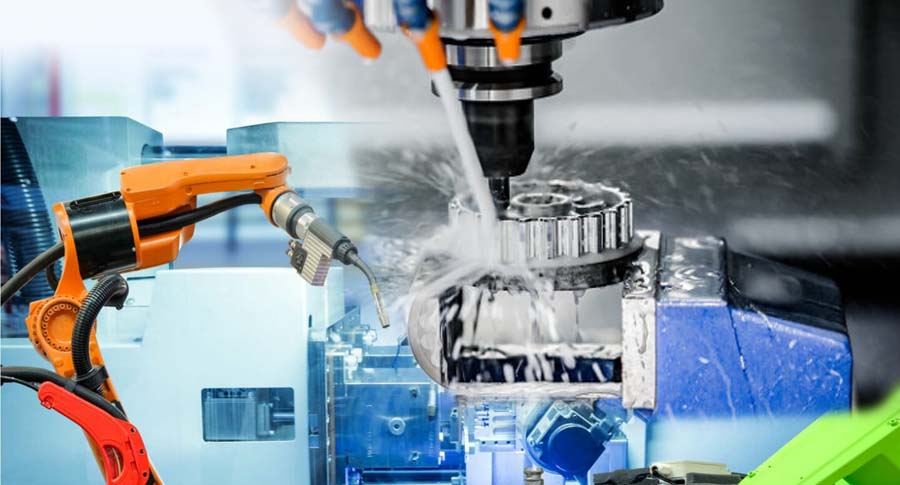In the realm of CNC (Computer Numerical Control) machining, robotics has emerged as a transformative technology, revolutionizing the way manufacturers approach production processes. By integrating robotics into CNC machining operations, manufacturers can achieve unparalleled levels of precision, productivity, and efficiency. In this article, we will explore the role of robotics in CNC machining and its impact on the manufacturing industry.
One of the key contributions of robotics in CNC machining is its ability to enhance precision and accuracy. Robots are equipped with advanced sensors and sophisticated control systems, allowing them to perform tasks with exceptional repeatability and consistency. With the precise movements and positioning capabilities of robots, manufacturers can achieve tight tolerances and intricate geometries, ensuring the highest quality of machined parts. This level of precision is particularly critical in industries such as aerospace, automotive, and medical, where even the slightest deviation can have significant consequences.
The integration of robotics in CNC machining processes also brings about significant improvements in productivity. Robots can operate continuously, 24/7, without the need for breaks or rest, resulting in extended production hours and reduced cycle times. Unlike human operators, robots do not experience fatigue, enabling them to maintain consistent performance and high output levels. This increased productivity translates into higher production capacity, faster turnaround times, and improved overall efficiency.
Furthermore, robots contribute to improved workplace safety in CNC machining environments. By taking over hazardous or physically demanding tasks, robots help minimize the risk of injuries to human operators. They can handle tasks that involve sharp tools, heavy lifting, or exposure to harmful substances, ensuring a safer working environment. By assigning robots to perform these tasks, manufacturers can enhance employee well-being, reduce workplace accidents, and create a more secure and productive workspace.
Flexibility is another significant advantage of robotics in CNC machining. Modern robots are designed to be versatile and adaptable, capable of handling a wide range of machining operations and part variations. By utilizing advanced end-of-arm tooling and vision systems, robots can perform complex tasks such as part inspection, deburring, and assembly, without the need for manual intervention. This flexibility allows manufacturers to quickly switch between different machining processes, adapt to changing production requirements, and respond to market demands efficiently.

Another key benefit of robotics in CNC machining is the reduction of human errors. While human operators are prone to mistakes, robots execute tasks with precision and accuracy, minimizing the risk of errors that could lead to costly rework or scrap. By automating repetitive and monotonous tasks, robots eliminate the potential for human-induced errors, ensuring consistent quality throughout the machining process. This level of reliability contributes to higher product quality, improved customer satisfaction, and reduced costs associated with defects.
In conclusion, robotics plays a vital role in CNC machining, unlocking new levels of precision, productivity, and efficiency. By harnessing the capabilities of robots, manufacturers can achieve exceptional levels of precision, improve productivity, enhance workplace safety, and reduce human errors. As technology continues to advance, robotics in CNC machining will continue to evolve, driving innovation, and shaping the future of manufacturing. With the integration of robotics, CNC machining will remain a cornerstone of modern manufacturing, enabling companies to stay competitive in a rapidly changing global landscape.



